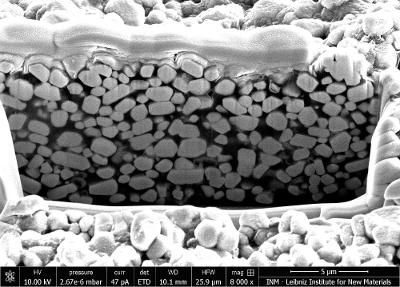River subbasins more depleted than
official figures show
09 April 2024
Published online 15 November 2015
Scientists have designed a fabrication technique that might soon allow developing world medical units to afford the latest digital X-ray technology.

© Genesis N. Ankah / Tobias Kraus
The latest X-ray detectors produce digital images, instead of photographic plates and films. X-rays go through the part of the body being examined, travel through and excite a “scintillating” material, which then turns the X-rays into light. The light is converted to electrical signals as it passes through an image sensor, producing a digital image.
These detectors are often too costly for medical units in developing countries and emerging markets. They are also imperfect. The light generated in the scintillator propagates in all directions, producing images with limited resolution. Advanced scintillators have been developed that address this issue, but depositing them in the detectors is expensive and they are vulnerable to humid conditions.
In the new “quasi-direct conversion hybrid-organic X-ray detectors”, an X-ray absorbing layer is formed by spraying a suspension made of scintillating terbium-doped gadolinium oxysulfide and light-sensing polymers onto a substrate.
The layer resembles raisins in raisin bread.
The light emitted by the scintillator particles is absorbed immediately within the polymer so it is unable to disperse widely, leading to improved resolution.
Samuele Lilliu, the physicist who conducted measurements for the project, in collaboration with New York University Abu Dhabi, fabricated a portable chamber that allowed the team to have a better understanding of the detector’s physics.
Among other things, these measurements revealed how materials that convert light into electrical charges organise themselves and interact at the nanoscale.
doi:10.1038/nmiddleeast.2015.221
Buchele, P. et al. X-ray imaging with scintillator-sensitized hybrid organic photodetectors. Nature Photonics http://dx.doi.org/10.1038/nphoton.2015.216 (2015).
Stay connected: